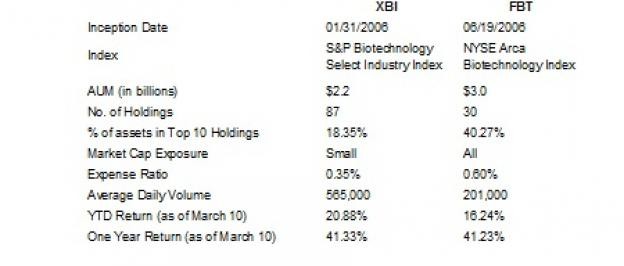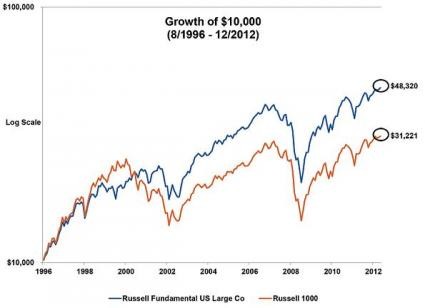Guide to Small Cap Growth ETFs Investing ETF News And Commentary
Post on: 7 Июль, 2015 No Comment

Small cap investing has been out of investors’ favor this year, giving up all its gains made last year. While large caps are clearly leading the broad market rally, small caps are lagging after their past 15 years of outperformance. This indicates a trend reversal after a long-standing preference for small caps.
In fact, the small caps, as represented by the popular ETF ( IWM ), lost about 0.9% in the year-to-date time frame, compared to a gain of 8% for SPY and 5.5% for IJH. This is because small caps seem overly priced at current levels after rising for several years. Additionally, greater complacency and low volatility resulted in the underperformance of the small caps and outperformance of the large caps. The large cap indexes hit multiple highs on several occasions despite economic and political hurdles.
Early in the month, the Fed in its monetary policy report had commented that equity valuations of the small cap stocks, in particular social media and biotechnology, are stretched despite the notable downturn in equity prices for such firms early in the year. In addition, the P/E ratio for the smaller companies remained at higher levels than the historical average (read: The Fed’s Valuation Concerns Put These Growth ETFs in Focus ).
Further, small caps are considered risky options in the current market turmoil as these could lead to extreme volatility since huge gains and losses can occur in a very short period of time. However, these pint-sized stocks, which are closely tied to the U.S. economy and generate the majority of revenues from the domestic market, tend to rise faster than the large caps amid improving American economic health.
Since the small caps are considered the barometer of domestic economy, these might be due for a strong rebound later in the year given a ramp up in the job market, a recovering housing market, rising GDP growth, improving manufacturing growth and increasing consumer spending. Further, America’s economy is expected to grow in the years ahead, particularly when compared to other developed markets such as Europe or Japan, suggesting that a U.S. small cap tilt is a good approach.
Moreover, honing in on growth securities in this capitalization level allows investors to earn more returns. Growth investing is basically a momentum play, which makes it a great strategy in a trending market (i.e. a market characterized by a prolonged uptrend). Stocks in the growth ETF portfolio harness their momentum in earnings to create a positive bias in the market, resulting in rocketing share prices. As such, pure growth funds tend to outperform during an uptrend.
Given this, it might be prudent to take a closer look at small cap growth ETFs that have the potential to outperform in the coming months and are valued still lower than their counterparts. Below, we have highlighted four funds, any of which could be an excellent play to ride out the economic growth and boom in the stock market by tapping the beaten down prices (see: all the Small Caps ETFs here ).
These products have a Zacks ETF Rank of 2 or ‘Buy’, suggesting that these will outshine in the months to come with the broader market rally.   
This ETF tracks the CRSP US Small Cap Growth Index, holding 718 securities in its basket. The fund is widely diversified across a number of sectors and securities. Financials, industrials, technology, health care and consumer services make up for double-digit allocation and each security does not hold more than 0.6% of total assets in the basket.
VBK is by far the most popular and liquid ETF in the small cap space with AUM of over $3.5 billion and average daily volume of more than 161,000 shares. Further, it is one of the low cost choices, charging just 9 bps in fees per year from investors. The ETF is up nearly 1% so far this year.  
Vanguard Russell 2000 Growth Index ETF ( VTWG )
This fund follows the Russell 2000 Growth Index and provides diversified exposure to a broad basket of 1,185 stocks as none of these holds more than 0.5% of assets. In terms of sectors, healthcare and technology take the top spots with roughly one-fifth of the total each, followed by modest allocations to producer durables (13.20%) and consumer discretionary (read: Top Ranked Small Cap Growth ETF in Focus: VTWG ).
The product has amassed $126.9 million in its asset base while volume is light, suggesting that bid/ask spreads are relatively wide and that total costs will come in much higher than the 20 bps expense ratio. The ETF has lost nearly 2% so far in the year.
Vanguard S&P Small-Cap 600 Growth ETF ( VIOG )
The ETF tracks the S&P Small-Cap 600 Growth Index. Holding 362 securities, this fund is also well spread out across each sector and security. Each security accounts for less than 1.7% while sector wise, information technology and financials take the top two spots with roughly one-fifth share, leaving a decent allocation for the others.

The fund has managed $60.3 million in AUM and volume is rather weak, suggesting additional cost beyond the expense ratio of 0.20%. The ETF is down nearly 2% year-to-date.
PowerShares Fundamental Pure Small Growth Portfolio ( PXSG )
The ETF follows the RAFI Fundamental Small Growth Index and holds 439 securities in its portfolio. PXSG looks unpopular and illiquid in the small cap space with AUM of $30.7 million and paltry average daily volume of under 4,000 shares. Expense ratio comes in at 0.41%, much higher than its other cousins.
Like the Vanguard products, none of the individual components makes up for more than 1.35% share in the basket. From a sector perspective, financials occupies the top position at 26.7%, while information technology (22.12%) and industrials (13.09%) round off the top three spots. The ETF has added about 4% in the year-to-date time frame (read: 3 Small Cap ETFs Outperforming the Russell 2000 Index ).
Bottom Line
These four funds provide a nice balance across number of securities and prevent heavy concentration, suggesting that these can easily counter shocks from some of the worst industry performers. As such, investors shouldn’t completely write off small cap growth ETFs from their holdings based on valuation concerns. Instead, they can take a closer look at a few of the top ranked ETFs in this sector for excellent exposure and some outperformance in the months ahead.
Want the latest recommendations from Zacks Investment Research? Today, you can download 7 Best Stocks for the Next 30 Days. Click to get this free report >>
Want the latest recommendations from Zacks Investment Research? Today, you can download 7 Best Stocks for the Next 30 Days. Click to get this free report














